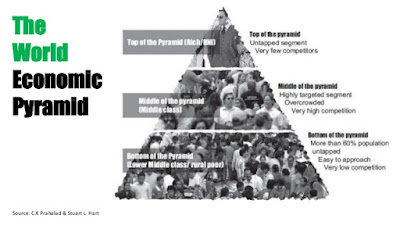On this site you can view links to many of the different iterations of the Idea Journal assignment we regularly assign to students in the ZSEM Entrepreneurship course. This year I think it is especially important to emphasize technique so we have reduced the number of entries which through the years have been in the range between 8 and 10 to this year's which is only 5 plus an introduction.
While I believe blogger is very easy to use as I have maintained this blog since 2010, I have to remain open to students choosing different online mediums to present their work. One student in particular asked if he could do his blog using Tumblr and I not only agreed to but took it as a challenge to create one using that medium as well. The point of the excericse as described to students is two-fold:
While I believe blogger is very easy to use as I have maintained this blog since 2010, I have to remain open to students choosing different online mediums to present their work. One student in particular asked if he could do his blog using Tumblr and I not only agreed to but took it as a challenge to create one using that medium as well. The point of the excericse as described to students is two-fold:
Students will have several exercises to demonstrate the process of
coming up with ideas based on self-knowledge, market knowledge,
problem/solution identification plus application of creative techniques,
The ideas generated through the individual student idea journals then
become part of a database of ideas that teams of students can further pursue to
research and develop into business plans for the remainder of the semester.
The Steps to achieving their own idea journals this year include:
Setting up their own blog on blogger, tumblr or another free and
publicly available medium
http://ideaplaymaker.tumblr.com/
(my user name is ideaplaymaker and then the blog site is tumblr.com)
(my user name is ideaplaymaker and then the blog site is tumblr.com)
and then adding original content they create to address the 5 idea
generation challenges including:
#1 Entrepreneur Profile and Sustainable Development Goals which draws on
work completed for the course by the student and by their peers to narrow down
ideas that are inspired by the worlds most pressing issues according to the UN.
Example:
http://ideaplaymaker.tumblr.com/post/151042841519/entrepreneur-profile-and-sustainable-development
(image plus 3 paragraphs and 3 business ideas, see links for full entry)
#2 Mindmap Passions, Purpose and Gifts to generate ideas about your self
Example:
http://ideaplaymaker.tumblr.com/post/151112741719/post2-mindmapping-passion-purpose-and-gifts-the
(image of your hand drawn mind map, plus written reflections on how this information could be channelled into different entrepreneurship endeavors)
#3 Storyboard Business Ideas with Character
(Selecting a character, six scenes they are in and what business ideas those scenes could represent. This one is straight forward as I did everything on a powerpoint slide and then converted it to an image and posted it with the type written list of 6 business ideas)
#4 I wish this was - ideas based on a location
(images of the space you have in mind, descriptions of its location and surroundings possibly link to its region on a map plus 3 business ideas of what it could be to you. Alternatively, students can post 3 images of 3 different locations and provide one business idea for each location. So 3x1 or 1x3 - either way generates 3 business ideas)
#5 Forced Relationships for Deconstruction/Reinvention
Example: http://ideaplaymaker.tumblr.com/post/151183317144/post5-deconstructingreimaging-using-forced
(try this exercise with multiple word sets to come up with a minimum 9 new business ideas as illustrated in the image example)
From this example, over 26 ideas were generated. Students will select some of their best and worst ideas to submit into an idea bank for the semester and then we will work on developing some of those ideas into full business plans.
Here are some links to student idea journals created this semester and based on this model:
(alphabetical order by last name)
Elisa Auge, France . http://elisaaugejournal.
Yazid Dennoui, France - http://yazidbusinessideas.blogspot.hr/
Renato Jammoul, Italy - http://renatojammoul95.
Laura Juric, Croatia - http://lauraideablog.tumblr.com/
Jorge Andres Martinez Valdez - http://cvcjorge.tumblr.com/
Tristan Mouysset, France - http://tristanmouysset.blogspot.hr/
Sara Maria Miranda Peixoto, Portugal http://funnyideass.blogspot.hr/
Fulya Ulutas, Canada - http://fulyasideajournal.blogspot.hr/
Alex Zhu, Singapore/Germany - http://jiangalexzhu.blogspot.hr/
and more to be added...
From this example, over 26 ideas were generated. Students will select some of their best and worst ideas to submit into an idea bank for the semester and then we will work on developing some of those ideas into full business plans.
Here are some links to student idea journals created this semester and based on this model:
(alphabetical order by last name)
Elisa Auge, France . http://elisaaugejournal.
Yazid Dennoui, France - http://yazidbusinessideas.blogspot.hr/
Renato Jammoul, Italy - http://renatojammoul95.
Laura Juric, Croatia - http://lauraideablog.tumblr.com/
Jorge Andres Martinez Valdez - http://cvcjorge.tumblr.com/
Tristan Mouysset, France - http://tristanmouysset.blogspot.hr/
Sara Maria Miranda Peixoto, Portugal http://funnyideass.blogspot.hr/
Fulya Ulutas, Canada - http://fulyasideajournal.blogspot.hr/
Alex Zhu, Singapore/Germany - http://jiangalexzhu.blogspot.hr/
and more to be added...


















